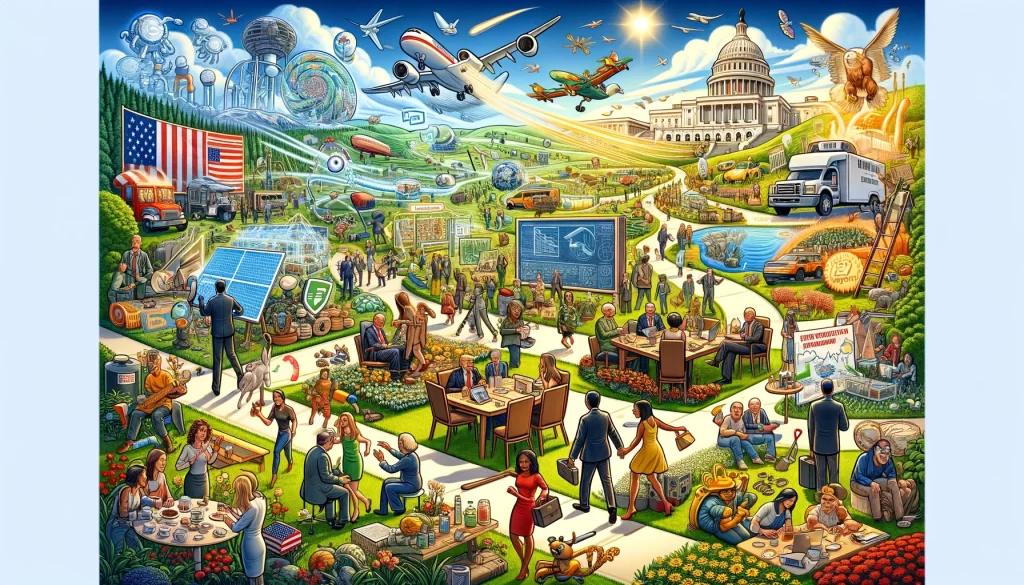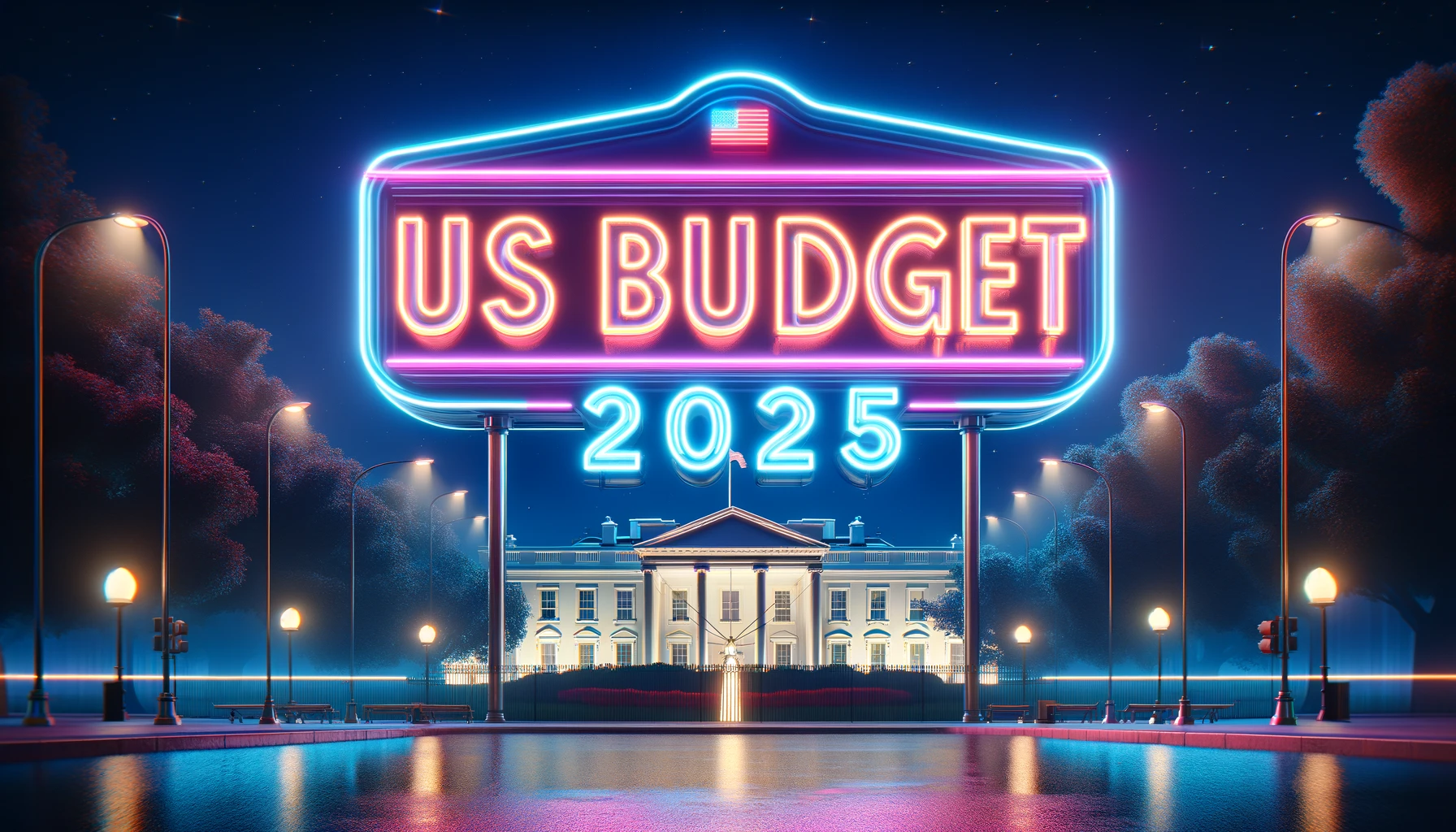In an ambitious move aimed at addressing some of the country’s most pressing issues, President Biden unveiled a comprehensive budget plan on Monday. The heart of this plan focuses on reducing the financial burdens many Americans face, including high costs of health care, child care, and housing. Moreover, it seeks to significantly lower the national debt by $3 trillion over the next ten years through new tax measures targeting the wealthy and large corporations.
This budget, proposing a hefty $7.3 trillion for the fiscal year 2025, is not just a financial document but a declaration of Biden’s vision for America, especially as he eyes re-election. It encapsulates a range of proposals that have been long championed by many progressives, including universal pre-K education, 12 weeks of paid family and medical leave, expansion of anti-poverty tax credits, and a new tax incentive for first-time homebuyers.
Despite its broad scope, the budget’s most substantial portion is allocated to mandatory programs like Medicare, Medicaid, Social Security, and veterans’ benefits, which are essential for millions of Americans and do not require annual approval by Congress.
To balance these spending increases, the plan proposes significant tax hikes on the nation’s wealthiest individuals and corporations. Notably, it includes raising the minimum tax rate on billion-dollar corporations from 15% to 21%, increasing taxes on foreign income for U.S. multinationals to the same rate, and closing loopholes in executive compensation tax deductions.
Additionally, Biden seeks to reinforce the IRS with $20 billion in new funding, reversing recent cutbacks by congressional Republicans. This move aims to enhance the agency’s capacity to scrutinize the tax affairs of wealthy individuals and businesses more closely.
Shalanda Young, the director of the White House’s Office of Management and Budget, praised the budget, asserting it demonstrates the success of Biden’s economic strategy, which prioritizes middle and lower-income Americans.

This budget announcement follows Biden’s State of the Union address, which not only galvanized the Democratic base but also signaled the expansive social goals Biden aspires to achieve with a second term. His vision includes making child care more affordable, ensuring paid leave for family and medical reasons, and enhancing care for the elderly and those with disabilities, allowing them to live at home while supporting family caregivers.
However, the proposal has already faced criticism from Republicans, with some dismissing parts of the plan, like the home buyers’ tax credit, as potentially exacerbating existing problems rather than solving them. Representative Jason T. Smith, a leading Republican, has voiced concerns that such measures could lead to higher mortgage rates and potentially spark another financial crisis.
The backdrop to these policy debates is the ongoing challenge of inflation, which has seen some moderation but remains a concern. Critics argue that increased government spending could further fuel inflation by pumping more money into the economy. Yet, Biden’s economic advisors counter that by arguing investments in areas like child care and elder care would actually boost economic growth by enabling more people to join the workforce, thereby easing inflationary pressures.
With Congress still navigating the budget for the current fiscal year, the journey for Biden’s 2025 budget proposal is just beginning. It represents not only a fiscal plan but a broader vision for America’s future, setting the stage for the debates and discussions that will shape the nation’s path forward.
This article is based on the following article:
https://www.washingtonpost.com/business/2024/03/11/biden-budget-campaign-taxes/

Background Information
Understanding these concepts can help the reader grasp the complexities of the budget proposal and its potential impact on American society.
1. The Federal Budget
- What It Is: The federal budget is an annual plan that outlines the government’s expected revenue (money it plans to take in, mainly through taxes) and expenditures (money it plans to spend) for the upcoming fiscal year.
- Fiscal Year: This is the government’s accounting year, which in the United States begins on October 1 and ends on September 30 of the following year.
- Role of Congress: The U.S. Constitution gives Congress the power to control government spending. The budget process involves both the President, who proposes a budget, and Congress, which then reviews, modifies, and approves it.
2. Mandatory vs. Discretionary Spending
- Mandatory Spending: These are expenditures that are required by law, including funding for Social Security, Medicare, and Medicaid. They occur automatically and do not need annual approval from Congress.
- Discretionary Spending: This part of the budget is negotiated annually as part of the budget process and includes spending on defense, education, and infrastructure.
3. Taxes and Revenue
- Taxation: The government collects taxes to fund its activities. This includes income taxes from individuals and corporations, payroll taxes for Social Security and Medicare, and other taxes.
- Progressive Taxation: This system taxes individuals and entities at higher rates as their income increases. Proposals to increase taxes on the wealthy and corporations are examples of progressive taxation, intended to redistribute income and fund public services.
4. The Proposals
- Universal Pre-K: This refers to making preschool education available to all 4-year-olds, regardless of family income, aiming to improve early childhood education.
- Paid Family and Medical Leave: Proposing to provide workers with paid time off for family and medical reasons, such as the birth of a child or a serious health condition.
- Anti-Poverty Tax Credits: These include measures like the expanded Child Tax Credit, which can significantly reduce child poverty by providing families with direct payments.
- First-Time Home Buyer Tax Break: An initiative to make homeownership more accessible to first-time buyers through tax incentives.
5. Economic Context
- Inflation: This is the rate at which the general level of prices for goods and services is rising, eroding purchasing power. The article discusses inflation and its impact on the economy.
- Investment in Social Programs: The idea here is that by investing in programs like child care and elder care, the government can enable more people to enter or remain in the workforce, potentially boosting economic growth and reducing inflation.
6. Political Landscape
- Bipartisanship: The need for both Democratic and Republican support in Congress to pass a budget. Given the divided nature of the current Congress, achieving consensus on Biden’s proposals may be challenging.
- Election Context: The budget is also a political document that reflects the President’s priorities and can influence election outcomes. It’s especially significant in an election year, as it outlines the vision the President will campaign on.

Suggested Debate/Essay Questions
- Do Biden’s Budget Proposals for Universal Pre-K, Paid Family Leave, and Anti-Poverty Tax Credits Align with America’s Economic and Social Needs?
- How Might Biden’s Budget Plan Influence the Upcoming Election and His Re-election Campaign?
Please subscribe to Insight Fortnight, our biweekly newsletter!
